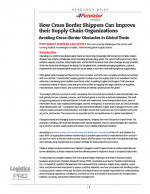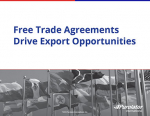Using Best Practices and Innovation to Drive Your Automotive Aftermarket Supply Chain
When German-based BMW saw a 2013 disruption in the flow of replacement parts to 40 aftermarket distribution centers and hundreds of repair shops, it experienced firsthand something that no luxury automaker ever wants to see: unhappy customers.
The BMW disruption, which lasted for a period of several months, was caused by a glitch in its technology system, which caused delays in parts deliveries. One distributor estimated that 20 percent of BMW’s customers were left waiting for essential repair work. The car company was forced to offer customers “loaner” vehicles and incur costly airfreight charges as a way to rush replacement parts to market.
While BMW is certainly not the first manufacturer to experience an aftermarket supply chain disruption, its experience illustrates three key points: (1) automotive aftermarket supply chains can be quite complicated; (2) aftermarket customers have high expectations for inventory availability and delivery schedules; and (3) technology is reshaping today’s automotive aftermarket supply chains.
Before discussing the nuts and bolts of supply chain strategy and management, it’s useful to understand what exactly we mean by the “automotive aftermarket.” According to the AutoCare Association, the trade group that represents the aftermarket, “aftermarket” refers to all products and services purchased for light-, medium-,and heavy-duty vehicles after the original sale. This includes replacement parts, accessories, lubricants, appearance products, tires, and collision repair parts (along with the tools and equipment necessary to make those repairs).
What’s Related




Favorites





